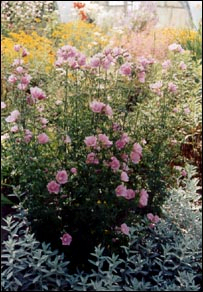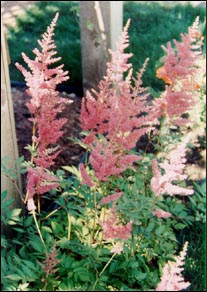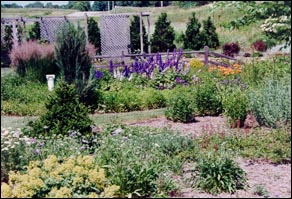 Light and soil requirements – Select perennials that will thrive in the light and soil you have. Choose full sun, part shade or shade plants in areas that correspond. Check varieties for soil requirements. If a plant needs moisture to grow well be sure you can provide that. If a plant grows better under dry conditions make sure your area is right for that plant.
Light and soil requirements – Select perennials that will thrive in the light and soil you have. Choose full sun, part shade or shade plants in areas that correspond. Check varieties for soil requirements. If a plant needs moisture to grow well be sure you can provide that. If a plant grows better under dry conditions make sure your area is right for that plant.
Bloom times – Keep in mind most perennials have short bloom periods. But don’t let this deter you. If you want color all season, you just have to do a little more research and planning. Select plants that are early and late spring, summer and fall blooming, and arrange them in a manner in which you will have color in your garden at all times.
Height – Perennials vary in height from 2″-12′. A standard method of arranging heights is called “stair-stepping”. Shorter plants are placed in front, medium height plants in the middle and taller plants in the back. It is good to break up this progression a bit to keep the garden more interesting and natural looking. Be careful not to hide smaller plants behind taller specimens.
 Spread – A newly planted bed can look rather bare if plants are spaced at recommended distances for mature specimens. To avoid this bare look you have several options. You can plant plants closer together and transplant a few out of the bed as they become crowded. You could use annuals in bare areas until the perennials reach mature size. Lastly, you could spread a layer of mulch 2″-4″ thick, which is highly recommended for other benefits also. Mulching benefits are explained under Care Requirements.
Spread – A newly planted bed can look rather bare if plants are spaced at recommended distances for mature specimens. To avoid this bare look you have several options. You can plant plants closer together and transplant a few out of the bed as they become crowded. You could use annuals in bare areas until the perennials reach mature size. Lastly, you could spread a layer of mulch 2″-4″ thick, which is highly recommended for other benefits also. Mulching benefits are explained under Care Requirements.
Color – Flower and foliage color should be considered. Perennials are noted for their usually short-lived but remarkable flower color. Select and arrange flower colors that will compliment each other, create pleasing and harmonious displays or incorporate nearby features you’d like to enhance. Warm, vibrant colors, such as red, orange and yellow, tend to stand out in the landscape. They can make a distance seem shorter. Warm colors work well as accents or for long distance viewing. They should be used carefully, however, because they can overpower the rest of your garden.
Cool, peaceful colors such as blue, green and purple, tend to recede into the landscape. They are especially effective for close viewing and in masses.
Foliage color can also make a dramatic impact on the look of your garden. Use purples, silvers, grays or bronze to help break up monotony in your garden.
 Form – Each perennial has a general shape or form. Basic forms are vertical or columnar, mounded and horizontal or prostrate. Most perennials fall between these three forms. Use a variety of forms to create the most pleasing effect.
Form – Each perennial has a general shape or form. Basic forms are vertical or columnar, mounded and horizontal or prostrate. Most perennials fall between these three forms. Use a variety of forms to create the most pleasing effect.
Texture – This refers to the overall appearance of a leafy plant. Perennials are commonly grouped as coarse, medium or fine textured. Create spatial illusions by using different textures. Plants with coarse textures appear closer than they really are, while those with fine textures recede into the distance.
Fragrance – Adding fragrant foliage and flowers to your garden can be the difference between an ordinary garden and an extraordinary garden. There are a great number of perennials that have either fragrant foliage or flowers. Many of these perennials will also attract more of natures gems (butterflies, hummingbirds, etc.) to your garden. There are low growing varieties that can be placed on or alongside walkways. When they are touched they release a pleasantly fragrant aroma in the air. It is also great to select fragrant flowers when planting a cut flower garden.



